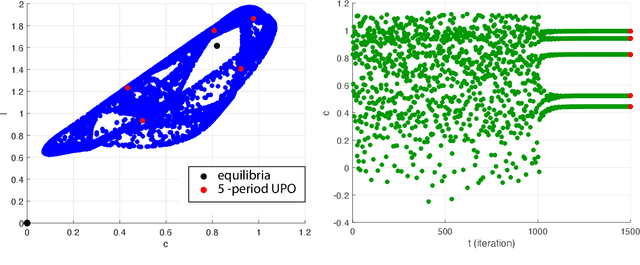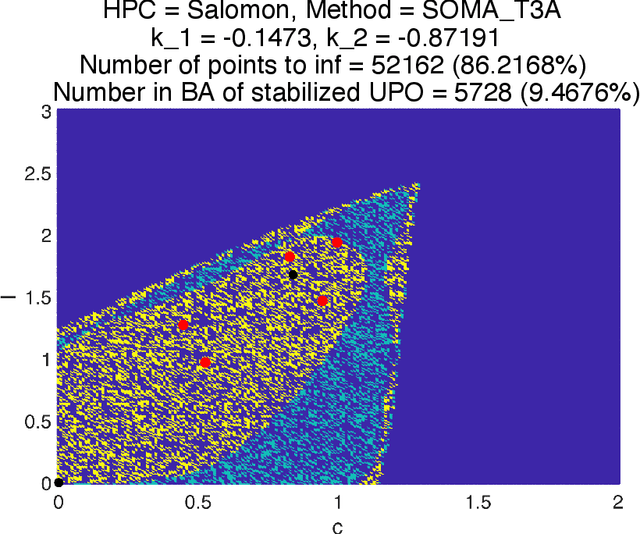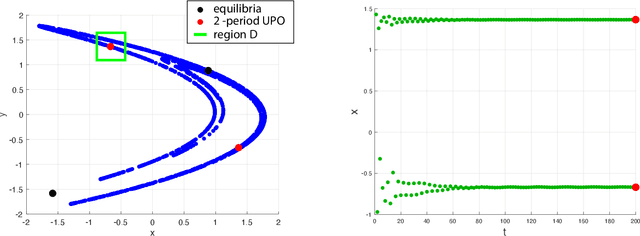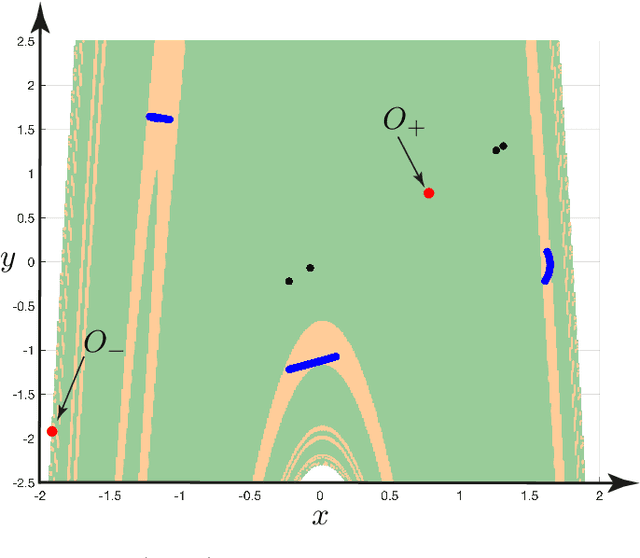Ivan Zelinka
Forecasting and stabilizing chaotic regimes in two macroeconomic models via artificial intelligence technologies and control methods
Feb 20, 2023



Abstract:One of the key tasks in the economy is forecasting the economic agents' expectations of the future values of economic variables using mathematical models. The behavior of mathematical models can be irregular, including chaotic, which reduces their predictive power. In this paper, we study the regimes of behavior of two economic models and identify irregular dynamics in them. Using these models as an example, we demonstrate the effectiveness of evolutionary algorithms and the continuous deep Q-learning method in combination with Pyragas control method for deriving a control action that stabilizes unstable periodic trajectories and suppresses chaotic dynamics. We compare qualitative and quantitative characteristics of the model's dynamics before and after applying control and verify the obtained results by numerical simulation. Proposed approach can improve the reliability of forecasting and tuning of the economic mechanism to achieve maximum decision-making efficiency.
Have You Ever Seen Malware?
Dec 05, 2022Abstract:To date, a large number of research papers have been written on the classification of malware, its identification, classification into different families and the distinction between malware and goodware. These works have been based on captured malware samples and have attempted to analyse malware and goodware using various techniques, including techniques from the field of artificial intelligence. For example, neural networks have played a significant role in these classification methods. Some of this work also deals with analysing malware using its visualisation. These works usually convert malware samples capturing the structure of malware into image structures, which are then the object of image processing. In this paper, we propose a very unconventional and novel approach to malware visualisation based on dynamic behaviour analysis, with the idea that the images, which are visually very interesting, are then used to classify malware concerning goodware. Our approach opens an extensive topic for future discussion and provides many new directions for research in malware analysis and classification, as discussed in conclusion. The results of the presented experiments are based on a database of 6 589 997 goodware, 827 853 potentially unwanted applications and 4 174 203 malware samples provided by ESET and selected experimental data (images, generating polynomial formulas and software generating images) are available on GitHub for interested readers. Thus, this paper is not a comprehensive compact study that reports the results obtained from comparative experiments but rather attempts to show a new direction in the field of visualisation with possible applications in malware analysis.
Computing with Modular Robots
Feb 15, 2022Abstract:Propagating patterns are used to transfer and process information in chemical and physical prototypes of unconventional computing devices. Logical values are represented by fronts of traveling diffusive, trigger or phase waves. We apply this concept of pattern based computation to develop experimental prototypes of computing circuits implemented in small modular robots. In the experimental prototypes the modular robots Cubelets are concatenated into channels and junction. The structures developed by Cubelets propagate signals in parallel and asynchronously. The approach is illustrated with a working circuit of a one-bit full adder. Complementarily a formalization of these constructions are developed across Sleptsov nets. Finally, a perspective to swarm dynamics is discussed.
* 33 pages, 23 figures, 5 tables
 Add to Chrome
Add to Chrome Add to Firefox
Add to Firefox Add to Edge
Add to Edge